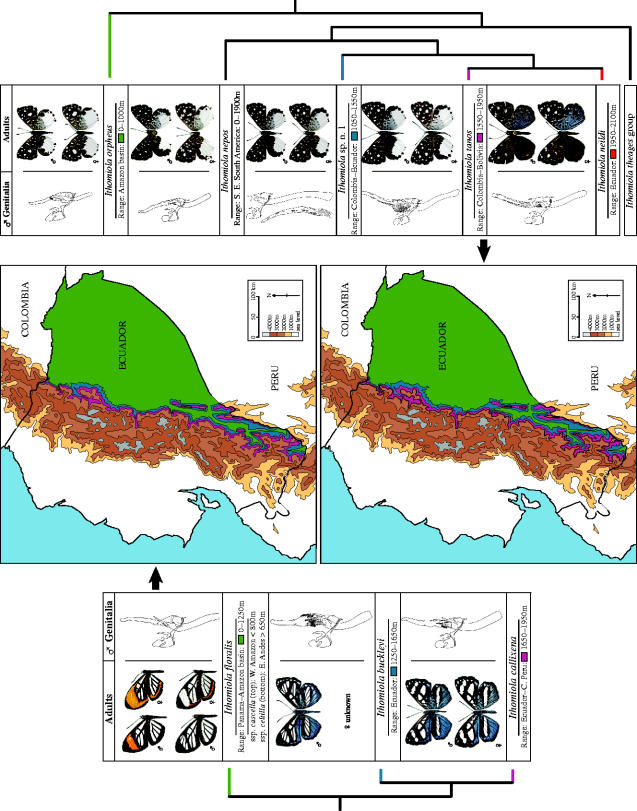Figure 3.
Elevational parapatry in the I. floralis group (left and top) and the nepos group +I. orpheus (right and bottom). Thumbnails in phylogenetic sequence of adults (dorsal surface at left, ventral surface at right) and their male genitalia (vertically positioned in lateral view) allow identification and illustrate most characters in the phylogenetic analysis. Female genitalia provide many fewer characters for either purpose and, although omitted here, are illustrated by Hall (in press). The known geographic and elevational range of each species is indicated. To better visualize the parapatric ranges of these species, the colour-coded elevational bands for each species (except I. nepos) are marked on maps of Ecuador, the only country from which they have almost all been recorded. Their geographic ranges within Ecuador have been extrapolated for effect, but all species are known from more-or-less throughout the zones indicated except I. buckleyi, which has been recorded to date from only the southern half of the country (see range maps in Hall in press).

